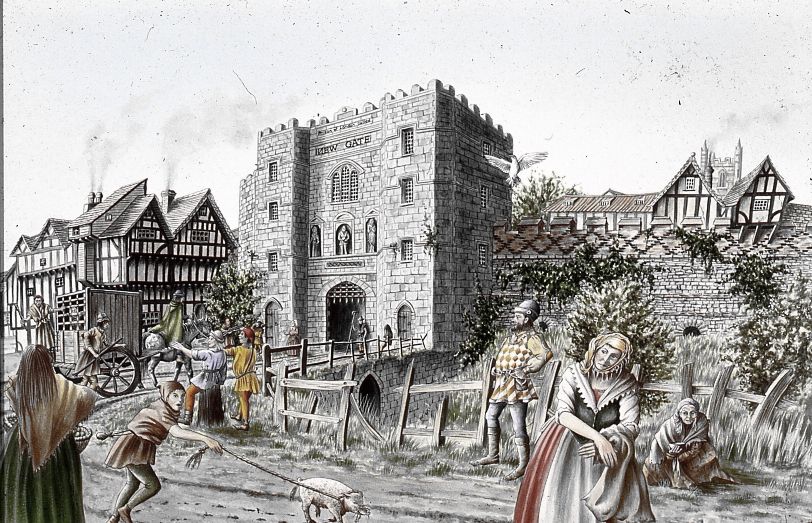Here are listed the public guided walks and tours I have currently got in my diary. I will be adding others all the time.
The Rebirth Of Saxon London Archaeology Walk 10.30am Sat 7th June 2025 To Book
The Peasants Revolt Anniversary Guided Walk 6.30pm Wed 11th June 25 To book
Tudor London – The City of Wolf Hall 11.30am 13th July 2025 To Book
Jane Austen’s London Anniversary Walk 3pm Sunday 13th July 25 To book
Roman London – Literary & Archaeology Walk 11.30 am Sat 2nd Aug 2025 To Book
Chaucer’s Medieval London Guided Walk 2:30pm Sat 2nd Aug 2025 To Book
Myths, Legends, Archaeology and the Origins of London 11.00am Sat 11th Aug 2025 to Book
The Archaeology of London Walk 6.30pm Fri 3rd October 2025 To Book
The Rebirth Of Saxon London Archaeology Walk 11.30am Sat 8th Nov 2025 To Book
Charles I and the Civil War. Martyrdom Anniversary Walk Jan 30th 2026 To book
For a complete list of my guided walks for London Walks in 2025 look here
St Agatha, Ravenna and Motor Cycling in Inferno

Today, I am in Ravenna. One of those places where the history brings gasps of amazement. To honour my visit, I thought I should roll out last year’s post. This is what I said:
When I revised my Saint Agatha post (link see below), I felt I needed an early image of Agatha. After all, her cult spread early on, and therefore, was likely to be genuine.
As I started to track down her image I was led, with some joy, to one of the most amazing Churches in the wonderful town of Ravenna. I visited the Basilica of Sant’Apollinare Nuovo with some wonderment when working as an archaeologist at Ferrara, in Emilia-Romagna. Forty Years ago.
I found out that Agatha was one of 22 female Saints on one of the walls of the Church. I discovered a pretty comprehensive description of the Church. As I looked at it, I noticed the record was made by, or involved, Professor Bryan Ward-Perkins. He was the Director of the site my friends and I worked on in Ferrara! (And I met him again last night, 2025 for the first time in years! We had dinner with fellow archaeologists, and Bryan was talking about the work he did on the Saints of St Apollinaire.)
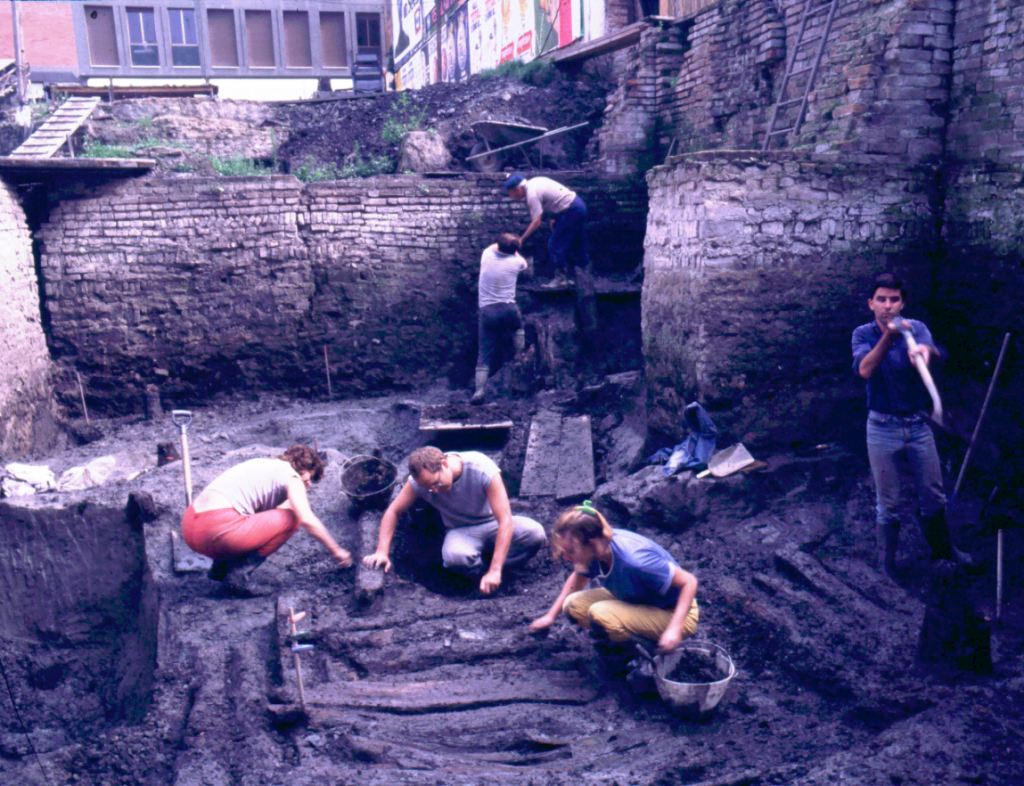
Ravenna
I’m guessing Bryan suggested we visit Ravenna on one of our trips to the beach at nearby Rimini. Ravenna was so awesome because the City became the capital of the Roman Empire in the West. It took over when Rome fell, then it was part of the Ostrogothic Kingdom, then of the Byzantine Empire. It spanned the period of the Arian Heresy.
And so, it was provided with some of the great glories of 5th and 6th Century Architecture. These include the Mausoleum of Galla Placidia, the Neronian Baptistery, the Basilica of Sant’Apollinare Nuovo, the Arian Baptistery, the Archiepiscopal Chapel, the Mausoleum of Theodoric, the Church of San Vitale and the Basilica of Sant’Apollinare in Classe. It’s hard to overestimate the impact on a young British archaeologist of seeing 5th Century buildings with roofs and astonishingly detailed mosaics still intact. Please visit!

Bryan Ward-Perkins description says ‘All the saints are haloed, bear crowns and are dressed in elaborate court dress. Unlike the men …., all have essentially the same youthful features. The only saint with a distinguishing attribute is Agnes, who is accompanied by a lamb.’ The men are given some personality, some have white beards others are youthful. While all the female martyrs are, essentially young virgins, and cannot be distinguished from each other. St Agatha, the list says, is the Saint next to Agnes with her lamb; the third in precedent. You can see her above and in detail below.
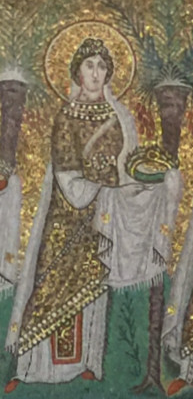
Basilica of Sant’Apollinare Nuovo wikipedia
Motorcycling from Ravenna to Inferno
Enough of the sublime! Now for the ridiculous. Whether on this visit or another, we decided to have a day at the beach at Rimini. After the day on the beach, a collective decision to stay over was made. The reason was to go to one of the big clubs (did we still call them discos?) probably to dance to ‘Frankie Goes to Hollywood’.

However, the hotels were all full. So I decided, late at night, to go back to Ferrara, on my own on my 175 cc Yamaha motorbike.

Thing was, I had started the day in Ferrara in the blazing Italian summer heat. So, I had hopped onto my bike dressed in shorts and t-shirt. Ferrara was 77 miles away (says google). One hour into the trip back, I was getting pretty cold, and really not enjoying driving through the lonely countryside. Therefore, I decided to pull off the main road to find a rural hostelry for what remained of the night.
Now, I remember this very vividly – the only likely road I could find was signposted to ‘Inferno’. I shrugged my shoulders, wondering what that was about, and drove towards it on a very deserted road. Eventually, I came to a sign which told me I was about to enter ‘Inferno’.
There was something very surreal about the situation. My courage failed me! I was not going to stay in a ‘motel’ in a place called ‘inferno’! I had seen too many horror films set in Motels and one in Inferno seemed madness. So, I turned round and continued my cold journey to Ferrara.
Inferno
Whenever I tell this story, I have some doubt about it. Did I really drive into a place called ‘Inferno’? But I have, for the first time, checked Google. It tells me that the road off the Rimini to Ferrara road goes through somewhere called: Vicolo Inferno, 40026 Imola BO, Italy.
Below is the post about St Agatha of Sicily who has a most interesting story.
Written in 2023 and updated in 2024, and 2025
St Kevin’s Day June 3rd
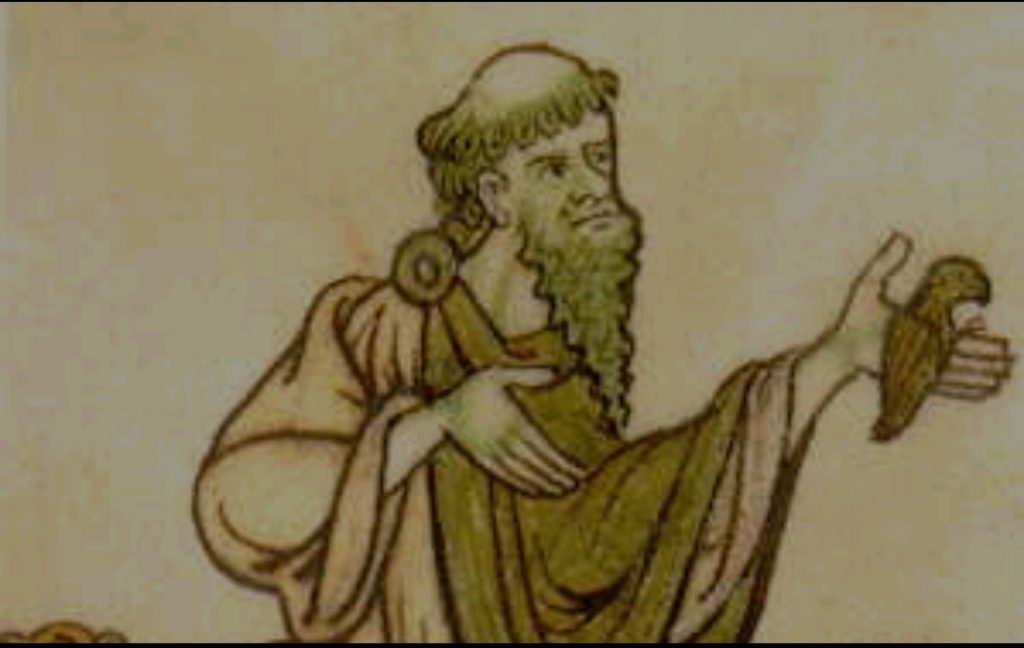
Thank you very much to my subscriber for alerting me to St Kevin’s Day which is my Saint’s Day. I was aware of St Kev and that the name meant ‘of noble birth’ but that’s was the extent of my knowledge.
But a little research on Wikipedia while on the train to visit my Dad, revealed that Kev lived to the grand old age of 120, born in 498 and died in 628. As my Dad is 97 and still going strong, maybe he and St Kevin will inspire my longevity?
Briefly, St Kevin met the great St. Columba; had a poem written about him by the marvelous Seamus Heaney (https://poetryarchive.org/poem/st-kevin-and-blackbird/); a song by the Dubliners; several mentions by James Joyce and a long distance path, the St Kevin’s Way, part of the Camino de Santiago network, named after him. And St Kev can help us understand the weather for the rest of June :
‘The weather on St Kevin’s Day will last all month‘.
So that means uninterrupted sun. At least in Ravenna where I currently am.
Coemgen, as he is known in Irish, was a hermit, living in a cave-like ledge above a lake. His piety attracted followers and a monastic settlement. He was known for his ascetic life and love for nature. So, a role model for all us Kevins?
His hagiography was written very late, so little of it can be confirmed. But, like other saintly hermits, he is associated with being tempted by women or the devil disguised as a woman. (St. Anthony the Great, St. Benedict of Nursia, Saint Chrysanthus, St. Vitus, St. Bernard of Clairvaux, St. Hilary etc.) Unfortunately, rather than just resisting his temptress, Coemgen is said to have drowned her. Not so good!
On the other hand, my sister sent me this photo of a souvenir from a shop in Northumberland.

That’s more like it! And oh so true! Clearly we, handsome, clever, positive, analytical Kevins have a lot going for us, despite the name.
For more on the Temptations of Hermits read this article:
Nechita, Andrea.“Offering Body, Pleasure, and Wealth: The Visual Representation of Women Tempting Saints (Fifteenth and Sixteenth Century).” Annual of Medieval Studies at CEU, 20 (2014): 96-112. For a summary, and some tempting illustrations, look here.
First written in 2023. revised June 2024, 2025
Pallio di Ferrara May 31st

On our archaeological reunion to Ferrara we picked the weekend of the Pallio to visit. We did not see it during the time we worked on the excavations. So, we returned this weekend to see it.
Here is a video of the history of Ferrara and the excavations which includes a picture of a young me.
https://youtu.be/v4zQxFA_dYA?si=EdBMR3XZ3oDEBKOH
The Pallio is a traditional event taking place since 1259. The town is divided into 8 contrade and each mounts a procession to the centre. Here there is some tremendous flag waving and hurling accompanied by drums and trumpets. Then the procession to the Piazza di Ariosto, where there is a stadium for a horse track.
The procession marches to stadium and around the stadium. Then there are foot races, a donkey race and finally a horse race. There is intense rivalry between the groups but a lovely atmosphere.
Spectators have to be patient during the events to allow the joy of the winners to be shared with the winning contrade. The final horse race takes an absolute age to begin because the horses will not settle. Apparently, there is some gamesmanship by trying to exhaust the other teams horses.
It certainly exhausted me. And once they got started at very long last they were recalled almost immediately. I decided to go to bed.
But you can see edited highlights on the official Ferrara youtube post here.
https://m.youtube.com/watch?v=zs0Vel67KpA
When back in the UK I will post some short clips. The flag waving is wonderful.
First posted June 2nd 2025
June & Juno, Queen of Goddesses

June is, probably, named after Juno, the leading lady of Olympus, sister and brother to the Great God Jupiter (Jove). In Welsh, it’s ‘Mehefin’ – Midsummer. In Gaelic, ‘An t’Og mhios’ – the Young Month. In Anglo-Saxon, ‘Litha’, the month of the Midsummer Moon.
I am in Ferrara where I worked on a joint UK/Italian excavation in the 1980’s. We are currently at a reunion, in the beautiful UNESCO World Heritage City. The weather is beautiful, and so are the people and the City! One of its gems is the Palazzo Schifanioa, which was the home of the Este Family, Dukes of Ferrara. Borso D’Este in the 15th Century initiated the frescos on the wall of the Hall of the Months. There is one for each month although not all survive in recognisable form. But above is June. The top panels show the Gods of the Month with their chariots or waggons. Below are the star signs for the month, and at the bottom a scene from 15th Century seen from an aristocratic perspective. June has a delightful agricultural scene. You will see more of these in future months. Although I won’t say much today as its difficult to do anything serious without a desk and a decent internet connection.

The picture above is from the Kalendar of Shepherds, with its 15th Century French Illustration. It shows shearing as the main occupation for the month but set within a flowery summer scene. In the roundels are the Gemini twins and the Cancer Crab, the star signs of June.

The text of the Kalendar of Shepherds gives a lyrical view of the joys of June:
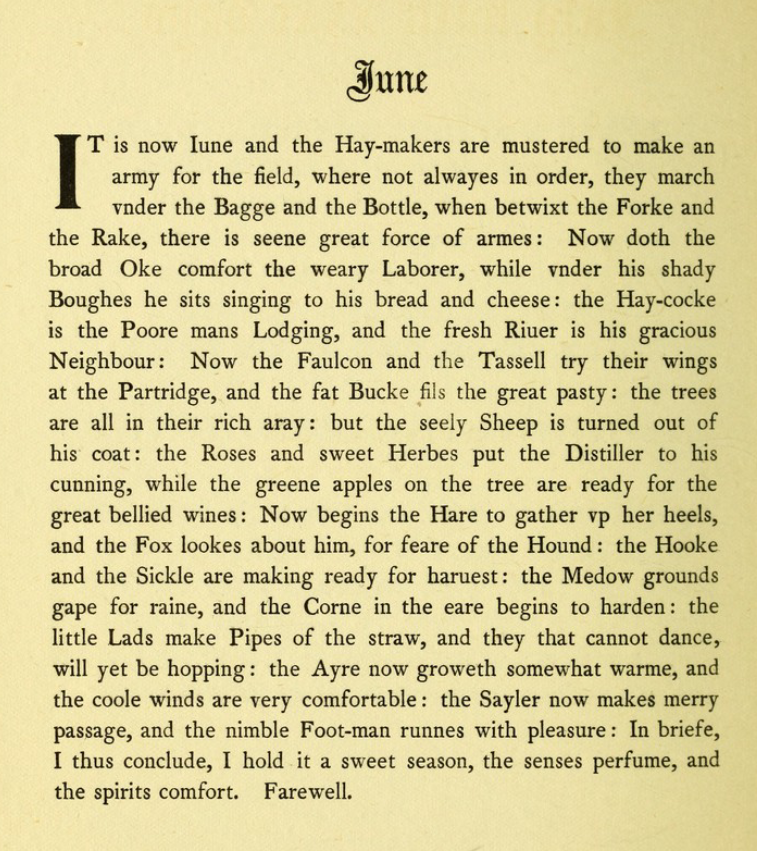
June might come, not from Juno’s name, but from an Indo-European word for youth or vital energy. Ovid in Fasti, his poem about the Roman Year, lets Juno make her own case:
‘O poet, singer of the Roman year,
Who dares to tell great things in slender measures,
You’ve won the right to view a celestial power,
By choosing to celebrate the festivals in your verse.
But so you’re not ignorant or led astray by error.
June in fact takes its name from mine.
It’s something to have wed Jove, and to be Jove’s sister:
I’m not sure if I’m prouder of brother or husband.
If you consider lineage, I was first to call Saturn
Father, I was the first child fate granted to him.
Rome was once named Saturnia, after my father:
This was the first place he came to, exiled from heaven.
If the marriage bed counts at all, I’m called the
Thunderer’s Wife, and my shrine’s joined to that of Tarpeian Jove.
If his mistress could give her name to the month of May,
Shall a similar honour be begrudged to me?
Or why am I called queen and chief of goddesses?
Why did they place a golden sceptre in my hand?’
Translated by A. S. Kline © Copyright 2004 All Rights Reserved
In the previous Book (on May), Ovid told another story that June was named for young men.
‘So I deduce that the elders gave their own title
To the month of May: and looked after their own interests.
Numitor too may have said: ‘Romulus, grant this month
To the old men’ and his grandson may have yielded.
The following month, June, named for young men’
Gives no slight proof of the honour intended.’
The Latin for ‘Young men’ comes from the Latin iuvenis, “youth”)
But let’s not go into Indo-European roots, and let’s simply accept the most wonderful month is named after Juno, the Queen of Goddesses, the deity of marriage and women. Probably most famous for hating the Trojans – she had a grudge against Paris, as he ruled against her in that famous divine beauty competition. And more seriously, what other reaction can the Deity of Marriage, have to the man who showed such disregard for the sanctity of marriage that he ran away with the already spoken for Helen?
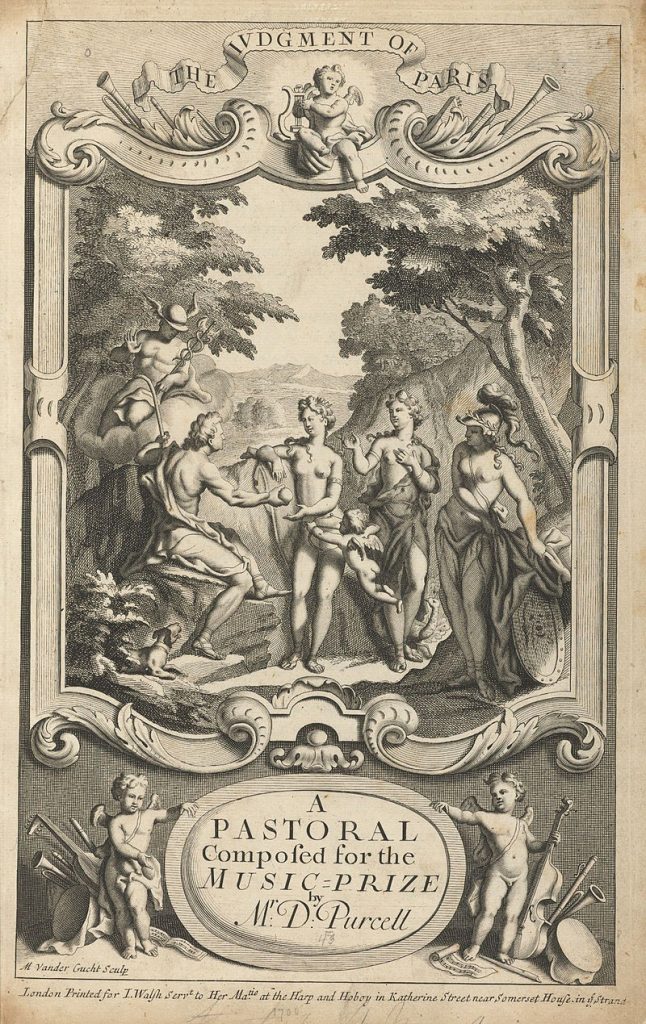
‘A sweet season, the senses perfume and the spirits comfort.’
First Written in June 2023 and revised June 2024, 2025
May & June: Dandelions, Hinder Fallings and Bed Wetting
This post sprang from something that my grandson said to in the middle of the park. He was curious as to why I was concerned that the park toilets were out of action. He told me I could, like him, just pull down my trousers and wee, right here, right then, up against the tree in the park. My attempt at explanation drew a perplexed, ‘What?’ ‘What?’ is his new word. After an explanation, his next word is invariable another ‘What?’.Hopefully the relevance of this will become apparent.
May and June are the most prolific months for dandelions, which used to be known as ‘piss-a-beds’. They are diuretic and were often eaten, and so might well have consequences for the young trainee child.
John Hollybush in his 1561 ‘The Homish Apothecary’ says:
‘When a young body does piss in his bed either oft or seldom: if ye will help him take the bladder of a goat and dry it to powder, and get him to drink with wine, or else take the beans or hinder fallings of a goat, and give him of the powder in his meat morning and evening, a quarter ounce at every time.’
(quoted in ‘The Perpetual Almanac by Charles Kightley)
Hinder fallings are what falls out of the hind-quarters of a goat. I’m not sure even an indulgent Grandparent is allowed to give droppings and wine to the little ones. Nor can I find any mention of goat products in modern medical recommendations. So I won’t be recommending this as a practical aid.
Medically, dandelions were very well regarded. Mrs Grieve’s ‘Modern Herbal’ reports that it are diuretic and a general stimulant to the system but particularly the urinary system. They were good for liver and kidney complaints; gall-stones; and piles. They were considered excellent to eat and drink. Particularly, dandelion sandwiches using young leaves, with salt, pepper, and lemon juice. They were also taken in salads, teas, and beers.
We used to blow the seeds from the dandelion seed head saying ‘She loves me. She loves me not’ at each blow, until the truth was revealed.
First written in June 2023, revised june 2024,2025. Rewritten 2025
Cotswolds Olimpicks May 30th

screen shot from https://youtube.com/shorts/wBOPAZ2131Y?si=UEED_F8QjSb_wW6Z
I’m in Ferrara, in the Po Valley near Bologna. Hence, falling behind on posts! I am on holiday but attending a reunion of Archaeologists who excavated here in the 1980’s. It was a collaboration between Italian and UK archaeologists. The British contingent was mostly from the Museum of London. More to follow over the next few days.
But on the 30th May I planned to tell you about the Cotswolds’ Olimpicks. This was set up by Robert Dover on a hill near Chipping Camden, in the early 17th Century.
Inspired by the Greek Olympics, he felt the modern world could do with an infusion of the original spirit.
The Olimpicks has a collection of tradition sports such as the sack race, and the tug of war. But the one that receives the most attention is shin-kicking. Two contestants try to knock each other over by kicking each other in the shins! They are not supposed to pull or push their opponent over. Or use Judo style throws. Protective gear is supplied in the form of straw or hay packed down the socks.
For other Cotswolds content look at my posts
coopers-hill-cheese-rolling-may-26th/
campden-house-fire-sunday-march-23rd-1862/
chipping-campden-murder-august-16th-1660/
First published 1 June 2025
Oak apple day May 29th
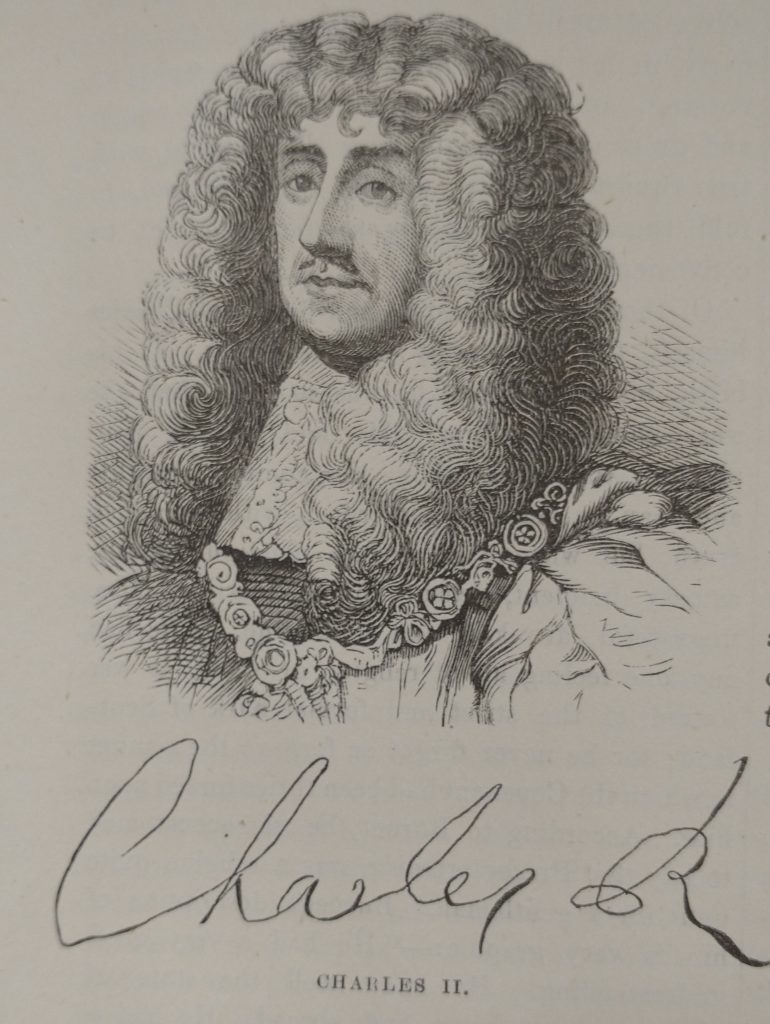
Oak Apple Day was set up by Parliament in 1660 as “An Act for a Perpetual Anniversary of Thanksgiving”. They were celebrating the restoration of Charles II to the throne in May of 1660. The Day was abolished in 1859, but a few places continue to celebrate the day.
The Oak was chosen partly as a symbol of England but particularly because after Cromwell’s Parliamentary Army defeated the Royalists at the Battle of Worcester (September 3rd 1651), Charles hid in an Oak Tree near Boscobel House in Shropshire on his epic journey to the South Coast and the safety of France.
People wore oak apples (or shick-shacks) which are a type of ‘plant-gall‘. This is an abnormal growth from a point of irritation on a plant. Or they were used sprigs of Oak leaves.
The text of the Parliamentary Bill said:
That in all succeeding ages, the 29th of May be celebrated in every parish Church and Chapel in England and the Dominions thereof, by rendering thanks to God for the Kings (Charles II’s) restoration to actual possession and exercise of his legal authority over his subjects’
Church Services for the Restoration; for the preservation from the Gunpowder Plot and the death of Charles the First were kept up until the year 1859.
You might like to look at my post:
St Augustine & the Origins of Christianity in Britain May 26th, May 27th & May 28th

We have various days to celebrate St Augustine of Canterbury. These are according to Google;
26 May (Anglican, Eastern Orthodox, and Catholic Extraordinary Form calendar in Great Britain)
27 May (Catholic Ordinary Form calendar)
28 May (Catholic Extraordinary Form calendar outside Great Britain).
Maybe like the Venerable Bede he died after Dusk! I give the explanation on yesterday’s post on the Venerable Bede.
St Augustine brought Christianity to England, leading the mission sent by Pope Gregory to Canterbury in 597AD. He was the Abbot of a Monastery in Rome before the Pope sent him to convert the Angles. I tell the story of the mission in my post: March-12th-St-Gregory-Punster-Extraordinary/.
Augustine is the patron saint of England and the Anglican Communion. But he is not the person who brought Christianity to Britain. To England, maybe. Britain. No.
The Romans brought Christianity to Englands green and pleasant lands. I summarise the evidence in my post on St Lucius, who is claimed to have brought Christianity to Britain. Less controversially. Britain’s first martyr was St. Albans, who I will post about in June. However, some modern scholars doubt St Albans existence.
But there is good reason to think Christianity was strong in Roman Britain, particularly in towns. There is, also, some evidence of non-Christian religious centres surviving in the countryside. The Roman word for non-Christians, pagans comes from the Latin word paganus, which meant someone who lived in the country.
After the Romans, the Christian Church continued to thrive, with a host of Saints in Cornwall, and Wales. The first substantial eye-witness account of post-Roman Britain, dated to the early 5th Century, is by the Catholic Bishop Germanus. This shows a battle for souls in Britain not between Christians and Pagans, but between Catholics and other Christians. The Catholics targeted these as heretics. I talk about this in my post about St Germanus here.
The next insight comes from the conversion of the Irish to Christianity later in the 5th Century. St Patrick’s account gives an eyewitness view. What is interesting is that St Patrick’s family were living in a town where aspects of Roman life continued. After being kidnapped by Irish raiders, St Patrick went on to lead the conversion of the Irish. But he was helped by St Bridget and Palladius. See my post on St Patrick here, St Bridget here.
St Augustine & the British Church
I don’t think Augustine comes over with any sense of personality or charisma. But Welsh history shows him to be an unsympathetic, hierarchical character.
The relationship between the British Church and the incoming Roman Catholic hierarchy was strained. Meetings were held between the British Church and St Augustine. To prepare for this the British arranged a Synod in the old Roman town of Chester. Here 7 British Bishops and others prepared for their response to St Augustine’s insistence on the primacy of the Roman Catholic Church. One of the contentious issues was the ‘computus’ for deciding the date of Easter. Another was the style of the monks’ tonsure! But it was a major step for the British Churches to align themselves with a foreign ecclesiastical structure.
The delegates were advised by a wise hermit to arrive late at the planned meeting with St Augustine. Then they were to see how he reacted. If he got up and welcomed them, then he was a fit leader to follow. If he acted imperiously, he was not a man of God. St Augustine failed the test, the meeting was a failure. St Augustine cursed the British which is said to have lead to a military campaign against them by the Anglo-Saxons. The British lost the subsequent battle of Chester. It was said that 1200 monks from the nearby monastery of Bangor-in-Dee were slaughtered.
The battle severed the connections between the British Kingdoms in Cumbria and Scotland from the Kingdoms in Wales and made it very unlikely that the British would ever regain control of Britain from the English.
Bangor-on-Dee is a few miles from Chester and one of the most important British Monasteries. Among the clerics trained there are said to be Pelagius, who created the Pelagian Heresy which Germanus was sent to crush; Gildas the first ‘historian’ of the Saxon incursion. And St Tudno, who gave his name to Llandidno.
The two churches were finally reconciled at the Synod of Whitby. For more about the calculations for Easter and the Synod of Whitby look at my post here.
First written on 27/28th May 2025
The Venerable Bede Died – May 26th 735AD
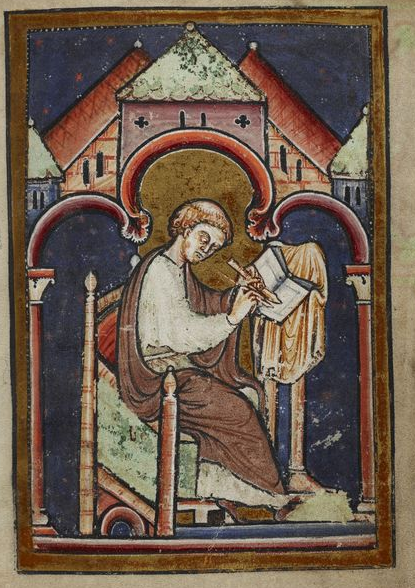
He died on the evening of what we would call the 25th, but in ancient times, the Day changed at dusk. So for his contemporaries, he died on 26th May. But, as he shares his day with St Augustine, some celebrate the Venerable Bede on May 27th!
Called the Father of English History, the Venerable Bede was an excellent historian, who set the tone and standard for many centuries of English Historiography. He is mostly remembered for the ‘Ecclesiastical History of the English People’ which provides the most trusted account of the events of the Post Roman, Migration, and Anglo-Saxon periods.
So well regarded is he that he is the only Englishman mentioned in Dante’s Paradiso. This is the third part of the Divine Comedy. The other parts are about the bad people in Hell and Purgatory. Bede is with the Angels in Heaven.
He is Venerable not only in the general sense of being wise, old and respected, but also in the technical sense:
‘(in the Roman Catholic Church) a title given to a deceased person who has attained a certain degree of sanctity but has not been fully beatified or canonized.‘ (Oxford Languages)
In 1899, the Catholic Church honoured him with the title of Doctor of the Church – someone holy who had contributed to the theology of the Church.
He is considered by some to be the best historian in olden times, only equalled by Herodotus (said Thomas Carlyle). Thucydides surely says I! (Note: Herodotus is known as the ‘Father of History’ for his storytelling and breadth of the scope of his attention. While Thucydides didn’t tell tales, he concentrated on empirical evidence and so is known as the Father of Scientific History)
Bede is so good because he checked his sources and had access to a wide range of books. He even had a line to the Vatican so he could check his facts with Vatican records. This in the 8th Century! The Venerable Bede is the polar opposite of Geoffrey of Monmouth, (writing in the 12th Century). If Bede mentions a person or an event then they are accepted as part of the story of the English. By contrast, if Geoffrey of Monmouth mentions a person or event, without further corroboration, then historians tend to consider it a story, myth or simply made up by Geoffrey.
But, the truth is not so straightforward. Bede is not without his biases and his sources were not themselves always reliable, nor above accepting myth, legends and miracles as fact. Geoffrey also has access to some, probably, oral traditions so that some (but which?) of his many tales of the Kings of Britain may hold considerable historical information.
Bede’s Influence on English History
Bede followed Gildas (A British Monk writing in the 6th Century) in wondering why God allowed the native Christian Britons to be defeated by the foreign Pagan English. Gildas assumed God was punishing the Britons because of the evil deeds of their so-called Christian Kings. Bede extends this to argue that God is punishing the Britons for not trying to convert the English to Christianity AND by being generally not a great bunch of Christians. God knows that the English, when converted, will be much better Christians than the Britons.
This starts a histographical trend for the English to think of themselves as the chosen people. By contrast, the Britons (Welsh, Scots and Irish) are feckless Barbarians (they thought). Bede concentrates on the English and countless generations of Historians have either left out the Britons, or demeaned them in their histories of England and indeed of Britain.
For example, most histories of Kings, deal only with England and start either with William the Conqueror or Alfred the Great and omit any British, Welsh, Scots or Irish Kings. Except for my book on the Kings and Queens of Britain, which starts with the largely legendary Kings of Britain, and includes some Welsh and Scottish Kings. To buy it, you will find details of it here.
So Bede is a great historian without whom we would have an even less clear idea about what happened in the centuries following the Roman Period. But also, contributed to an Anglo centric view of history. He was writing in Northumberland at the Monastery of Jarrow, and is more sympathetic to Northumbria than to Wessex, Mercia, and the British Kingdoms.
Bede’s Books
He wrote over 60 books. One was about the theological science of computus. In particular, the dating of Easter. The British Church had one method, the Catholic Church another. This contributed to a series of confrontations between the 2 Churches. And was only finally resolved at the Synod of Whitby in the favour of the Catholic Church.
Bede was instrumental in making Dionysius Exiguus idea of dating from the birth of Christ as the standard AD /BC system. He also thought the Catholic calculation that Jesus was born 5000 years ago was wrong and used the Bible to calculate the more ‘correct’ date was 3952 BC. Archbishop Ussher in the 17th Century took Bede’s calculation and improved it and suggested the proper date was 4004 BC.
For more about Dionysius Exiguus and the division of time, see my post here.
First Written on May 26th 2025
Coopers Hill Cheese Rolling May 26th
Today, is the Day to go Cheese Rolling in the Cotswold! Coopers Hill Cheese Rolling takes place near Birdlip in Gloucestershire. For at least the last 200 years, people have gone to the top of the Hill, sent a Double Gloucester Cheese rolling down the hill at up to 70 miles an hour. Then chased after it despite the steep slope. Its mayhem. Watch this video:
For more information, see this web site:
https://www.cotswoldshideaways.co.uk/whats-on/event/coopers-hill-cheese-rolling-26th-may-2025
For more of my posts on the frolics of May see here:
First Published on May 26th 2025
